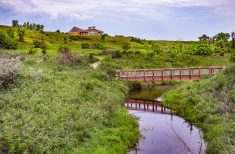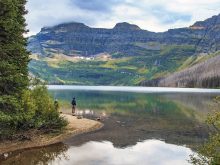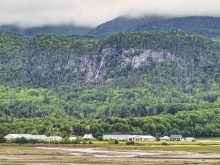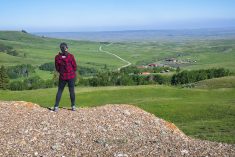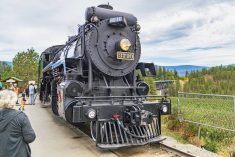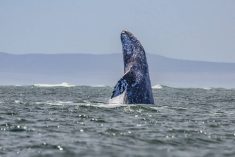While we have all seen news coverage of rocket launches, space shuttles and moon landings, visiting the place that made it all happen brings it to life.
The Kennedy Space Center sits near Florida’s Atlantic coast, less than an hour’s drive east of Orlando. Even those with only a mild interest in space can’t help but be impressed, while space junkies are completely googly-eyed.
The centre’s visitor complex is huge with several buildings and exhibits, including an IMAX theatre with 3D presentations on space exploration. Rising above it all is the Rocket Garden, a display of rockets from various eras of space travel, from the first that launched satellites to the powerful Saturn 1B that orbited the moon.
Read Also

Know what costs are involved in keeping crops in the bin
When you’re looking at full bins and rising calf prices, the human reflex is to hold on and hope for more. That’s not a plan. It’s a bet. Storage has a price tag.
We were especially fascinated with the Space Shuttle Atlantis exhibit, the centrepiece being the spacecraft itself, which was the last to be used in the 30-year shuttle program.
When it retired in 2011, Atlantis had more than 200 million kilometres on the odometer.
The most intriguing part of seeing it up close is that the outside isn’t smooth like an aircraft. Instead, it is covered in quilt-like heat resistant tiles. Finding a covering to withstand the extreme heat of re-entering the atmosphere proved to be the most challenging part of designing the craft.
The shuttles were intended to haul stuff around, so many exhibits show their role in building the International Space Station and making repairs to the Hubble telescope.
To get a taste of what it’s like to blast off in a space shuttle, you can take a ride in a simulator that reproduces some of the powerful shuddering motion during lift-off.
A bus also takes visitors to see the launch pads, past the Vehicle Assembly Building, which is said to be the highest one-story building in the world, and then to the Apollo Saturn V Center devoted to moon missions. The highlight is a restored Saturn V rocket, as long as a football field and the largest rocket ever flown.
There are moon rocks, space suits, a moon buggy, the firing room and original consoles used for the first lunar missions. As well, visitors can see the remarkably small command module that splashed down in the ocean with astronauts aboard.
In short, anything and everything to do with flying to the moon is on display.
The facility is surrounded by the Merritt Island National Wildlife Refuge, 140,000 acres of coastal dunes, scrubland, estuaries and marshes. Driving into the centre, we passed wetlands filled with wading birds and a couple alligators.
The most visitor-friendly part of the refuge is just north of the space centre with hiking trails, a visitor centre and the popular Black Point Wildlife Drive that winds through a maze of wetlands.
Alligators are common, but the main draw is the wide array of birds, especially in winter when many migrants are around. The highlight for us was seeing wading birds such as cranes, storks, dazzling pink roseate spoonbills and the elegant reddish egret. The Atlantic shore is lined by Playalinda Beach, one of the longest undeveloped beaches in Florida and prime habitat for nesting sea turtles.
Arlene and Robin Karpan are well-travelled writers based in Saskatoon. Contact: travel@producer.com.




